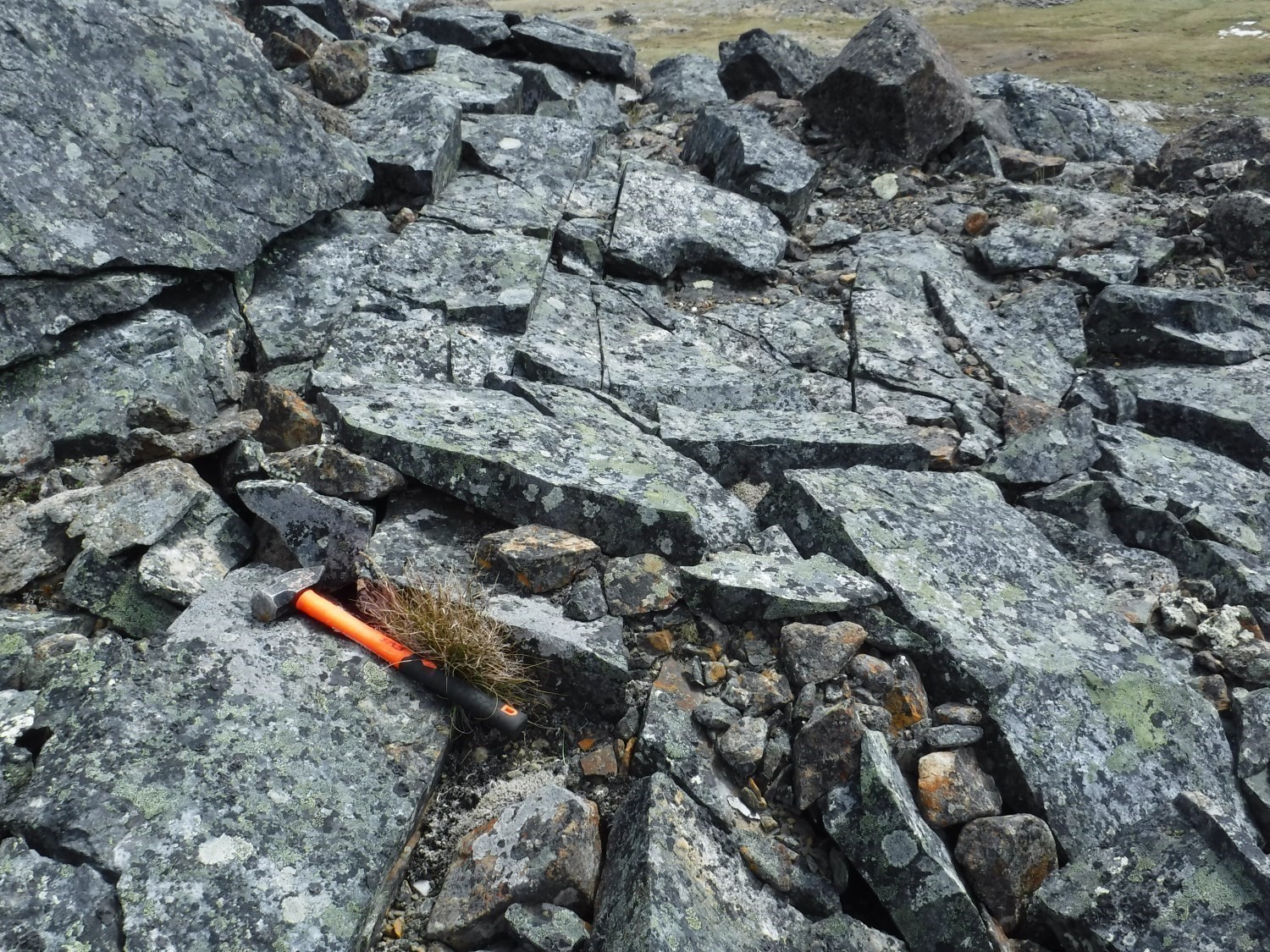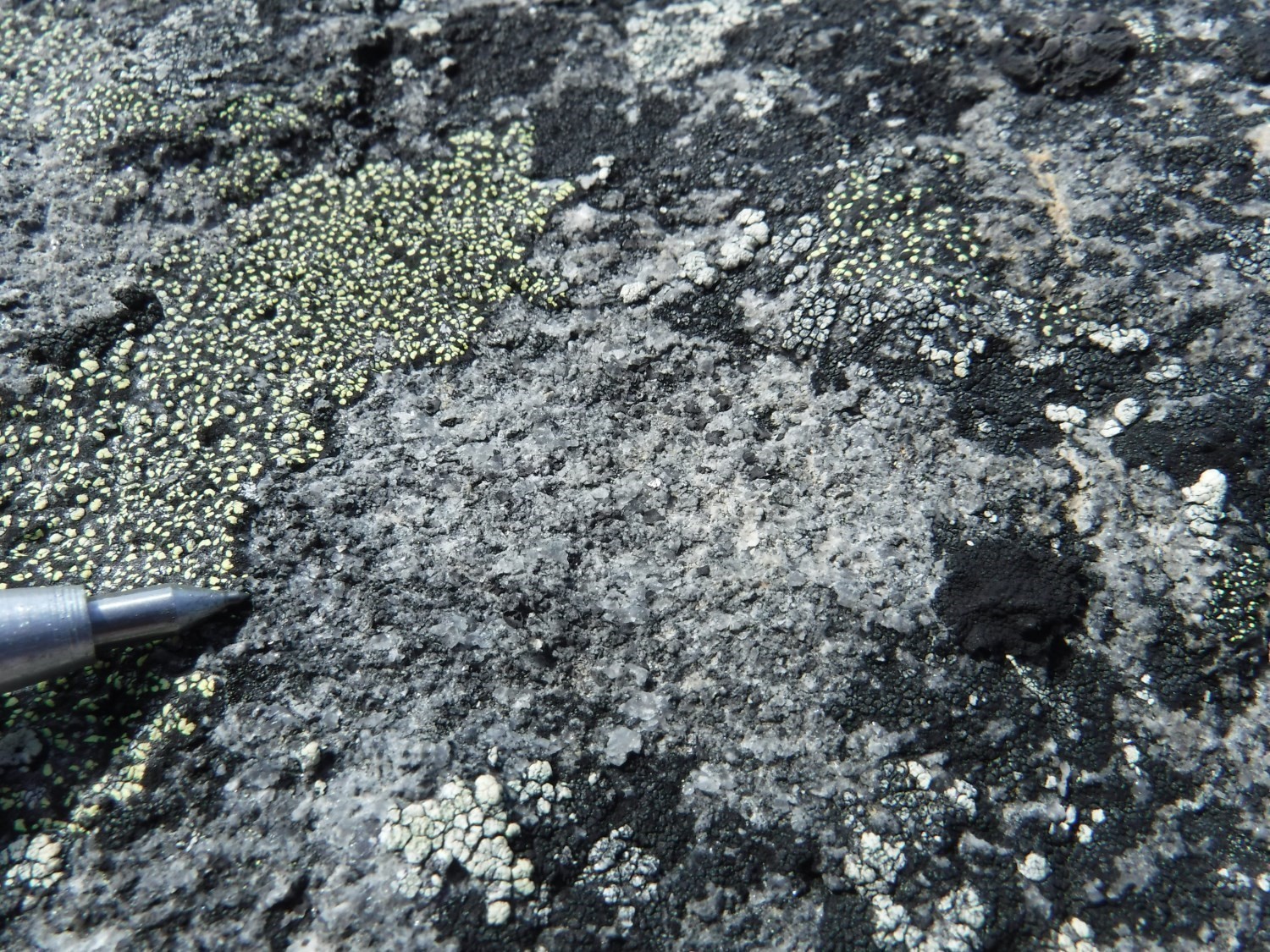
| Author: | Mathieu and Beaudette, 2019 |
| Age: | Paleoproterozoic |
| Reference section: | None |
| Type area: | Old Asbestos Hill Mine area, Purtuniq (NTS sheet 35H13) |
| Geological province: | Churchill Province |
| Geological subdivision: | Ungava Orogen / Ungava Trough / Northern Domain |
| Lithology: | Tonalite |
| Type: | Lithodemic |
| Rank: | Lithodeme |
| Status: | Formal |
| Use: | Active |
Background
The Purtuniq Pluton was defined by Mathieu and Beaudette (2019) to individualize a kilometre-sized pluton belonging to the Cape Smith Suite. This suite was introduced by Taylor (1982) as a sequence of late intrusions of various natures (granitic to peridotitic). These intrusions occur throughout the Ungava Orogen, but mostly in the Northern Domain.
Description
 The Purtuniq Pluton consists of tonalite. It is easily recognizable by its dark grey patina that contrasts with brown-red Watts Group peridotite and very dark grey Spartan Group graphitic mudrock. The pluton is in positive relief and is exposed as continuous outcrops. Tonalite is homogeneous, massive, medium grained, hololeucocratic and not magnetic. The alteration patina and fresh surface are dark grey. Primary phases are quartz as isolated or interstitial anhedral grains (20-25%), tabular plagioclase (75-80%) and muscovite (trace-1%). Quartz exhibits undulatory extinction and fine edge recrystallization. Plagioclase has been replaced almost entirely, mostly by subhedral zoisite, and in lesser proportion by very fine sericite flakes. Chlorite veinlets and opaque minerals are locally observed.
The Purtuniq Pluton consists of tonalite. It is easily recognizable by its dark grey patina that contrasts with brown-red Watts Group peridotite and very dark grey Spartan Group graphitic mudrock. The pluton is in positive relief and is exposed as continuous outcrops. Tonalite is homogeneous, massive, medium grained, hololeucocratic and not magnetic. The alteration patina and fresh surface are dark grey. Primary phases are quartz as isolated or interstitial anhedral grains (20-25%), tabular plagioclase (75-80%) and muscovite (trace-1%). Quartz exhibits undulatory extinction and fine edge recrystallization. Plagioclase has been replaced almost entirely, mostly by subhedral zoisite, and in lesser proportion by very fine sericite flakes. Chlorite veinlets and opaque minerals are locally observed.Thickness and Distribution
The pluton covers an area of ~0.5 km2. The measured apparent thickness is 120 m. Rocks of the Watts Group have been thrust over the Spartan Group in the vicinity of Purtuniq Pluton outcrops.
Dating
A sample of Purtuniq Pluton tonalite was dated 1876.1 ±1.5 Ma (Parrish, 1989).
| Unit | Sample | Lithology | Isotopic System | Mineral | Crystallization Age (Ma) | (+) | (-) | Reference |
| pPput | S162A-86 | Tonalite | U-Pb | Zircon | 1876.1 | 1.5 | 1.5 | Parrish, 1989 |
Stratigraphic Relationship(s)
The Purtuniq Pluton cuts metasedimentary rocks of the Spartan Group, as well as peridotite of the Watts Group. Crosscutting relationships are observed on outcrops 18-GM-5116 and 18-GM-5117.
Paleontology
Does not apply.
References
Publications available through Sigéom Examine
MATHIEU, G., BEAUDETTE, M. 2019. Géologie de la région du lac Watts, Domaine Nord, Fosse de l’Ungava, Nunavik, Québec, Canada. MERN. BG 2019-04.
Other publications
Machado, N., David, J., Scott, D.J., Lamothe, D., Philippe, S., Gariépy, C. 1993. U-Pb geochronology of the western Cape Smith Belt, Canada: new insights on the age of initial rifting and arc magmatism. Precambrian Research; volume 63, pages 211–223. doi.org/10.1016/0301-9268(93)90034-Y.
Parrish, R.R. 1989. U-Pb geochronology of the Cape Smith Belt and Sugluk block, northern Quebec. Geoscience Canada; volume 16, pages 126–130. Source.
Taylor, F.C. 1982. Reconnaissance geology of a part of the Canadian Shield, northern Quebec and Northwest Territories. Geological Survey of Canada, Memoir 399, 32 pages (7 sheets). doi.org/10.4095/109241.

